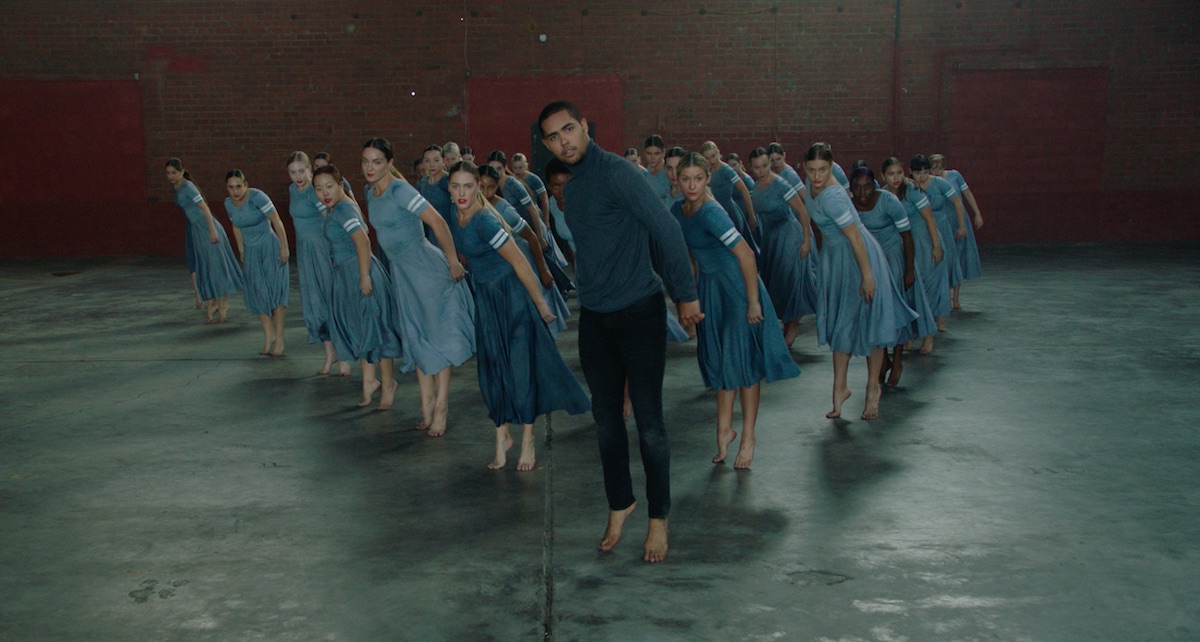Maybe the biggest struggle for choreographers is keeping choreography fresh, new, innovative and exciting. Dance is ever evolving and changing, and keeping up with new trends (or creating new ones) can be challenging. Here, Dance Informa speaks with several professional choreographers about how they keep their ideas and choreography fresh.
Andrew Winghart
You probably saw the epic dance video Winghart directed and choreographed to Justin Timberlake’s Cry Me a River this year. In addition to creating a new live work he has also recently choreographed a music video for EDM duo ‘Louis the Child.’ Winghart is on staff for JUMP Dance Convention.
Trust, step away, and practice.
“Trust your instincts! Don’t be afraid to try something that might not work. Far too often, I find that people are unwilling to deviate from styles or movement that has already been deemed ‘cool’. For every one awesome idea that works, there are likely 99 iterations that came before it that didn’t.
Try to step away from your own work and look at it with an objective eye. Ask yourself critical questions: Does this look like someone else’s work? Does it achieve what I set out for it to achieve? How would someone who has never seen this interpret it?
Practice. It takes a long time to develop your own choreographic voice and really refine it. You have to be willing to put in time and work on building a skill set that allows you the freedom to act quickly and efficiently when inspiration comes.”
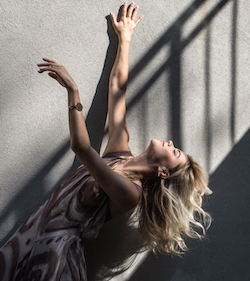
Lauren Adams. Photo by Mike Esperanza.
Lauren Adams
Adams is on staff with 24 Seven Dance Convention. Adams recently presented a new work in NYC – a duet featuring Matt Luck and Taylor Johnson.
Explore different art forms and genres of dance to feed your imagination.
“Being in this industry for 17 years, it is important for me to continually explore new aspects of art in order to stay relevant. I am inspired by dance, film, music, theater, anything that sheds light on the human experience. In order to expand my personal boundaries, I might try to interpret a popular song with an edgier movement vocabulary. I’ll take familiar or classical movement but somehow interrupt the phrasing with something unexpected or new to me.
I also love to incorporate elements from different genres of dance. I might be inspired to incorporate more dramatic hands or syncopated, percussive footwork in one of my contemporary pieces after watching a flamenco performance. After hearing a certain piece of music at a concert or in a show, I will research an entire album and try and find something I haven’t heard before. I love returning to old classic tracks, anything that makes me nostalgic, and creating movement that’s considered current; it creates a nice juxtaposition.
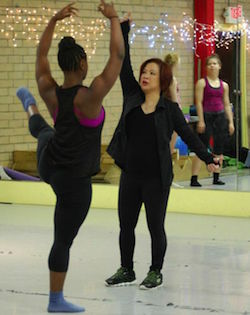
Dale Lam instructing a student. Photo courtesy of Lam.
It’s really all about feeding my imagination and daring to try something different. I find that when I’m a little afraid of what I’m attempting to create, it’s because I’m wanting and trying to do something unexpected or unusual, and I really enjoy creating from that space.”
Dale Lam
Lam is the owner/director of Columbia City Jazz in Columbia, South Carolina.
Find interesting transitions, collaborate, and seek new experiences.
“I like to search for more interesting ways of transitioning in and out of movement to help create a sense of surprise and unpredictability. Collaborating with another person can spark new thought and new perspective, especially if they come from another genre of dance. Seek new experiences, music that pushes you to create differently. Take a different kind of movement class – ballroom, yoga, martial arts and/or acting class to spark new ideas.”
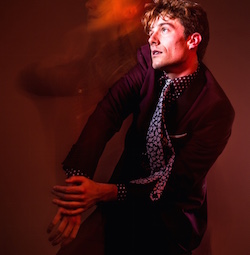
Nathan Madden. Photo courtesy of Murphy Made.
Nathan Madden
Madden is currently performing in Hello, Dolly! with Bette Midler – his third Broadway show. Madden is a Juilliard graduate and has performed with BJM DANSE, Twyla Tharp’s national tour of Come Fly Away, made his Broadway debut with the cast of Chicago, and was an original cast member of Christopher Wheeldon’s An American In Paris.
Change up music, and stay updated on current events.
“Whenever I’m approaching new work, I love to listen to a variety of music and even create movement phrases to pop or hip hop music and then reset it to classical music, or vice versa. I find this challenges me to build a different movement quality based on various rhythms and accents.
Read up on all that’s happening in the world. Work that is based on current events and that carries relevance to our culture and to you personally as the creator will always have more effect on your viewers. If it means something to you, it may mean something to your audience.”
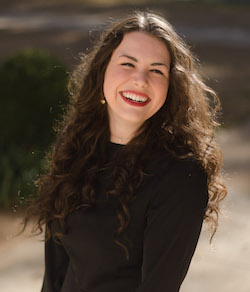
Laura Testino. Photo by Will Hamilton.
Laura Testino
Testino is a recent graduate of The University of Alabama, with Bachelor of Arts degrees in dance and journalism. She plans to pursue a career in multimedia journalism.
Take risks, and set choreography to several music options.
“Growing up, my studio always competed against another that had equally fierce costumes and seamless music mixes. The first place trophies would bounce between us, depending on whether the set of judges preferred long legs and insane turn sequences or emotional arm reaches and risky choreography. (I also joke that my legs are ant-sized, so place me accordingly.) I loved that the movement I did was interesting, and the judges always thought it was ‘innovative’, so when I went to college, choreography opportunities were high on the list. I was able to choreograph for five of the seven semesters I was there, staging six works and filming three.
It’s easy to feel stale, or lose your voice when it’s being informed by the technique classes you’re taking. To combat that, I always kept an ‘art’ playlist, full of music I just enjoyed. I would choreograph combinations to my favorite music, then morph the movement to a jazz song, playing with speed and other dynamics. Then, I’d place it over the track I wanted for my dance work. That always helped me keep interesting movement that still fit my voice but that wasn’t ruled by the musicality of the final musical selection I chose for my work.”
By Allison Gupton of Dance Informa.


